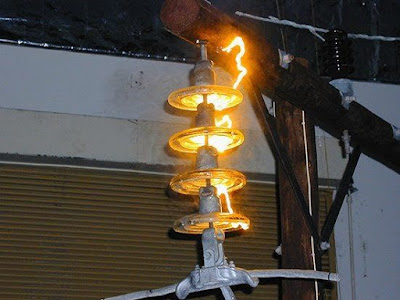The purpose of the insulator or insulation is to insulate the electrically charged part of any equipment or machine from another charged part or uncharged metal part. Creepage Distance is the shortest path between two conductive parts measured along the surface of the insulation as shown in figure below.
When a flashover occurs in the system this distance helps the flashovers not to interfere with the live systems.
The basis for the determination of a Creepage Distance is the long term r.m.s. value of the voltage existing across it. This voltage is the working voltage, the rated insulation voltage or the rated voltage.
The influence of the degrees of pollution in the micro environment on the dimension of Creepage Distances is taken into account in calculation to avoid failure due to tracking. While determining Creepage for an Insulator it should be taken care that for the same equipment, different micro environment conditions can exist.
Mind that a Creepage Distance cannot be less than the associated clearance so that the shortest Creepage possible is equal to the required clearance.


While designing the foundation of 132 KV circuit breaker SF6 (ABB make), how much mechanical load is assumed ? What other parameters should be taken ?
It is better to refer the design basis parameters of the foundation provided by consultant.
What is the main reason of low voltage during peak summer season , say 120 KV at 132 KV level at 132/33 KV Grid station fed from 220/132 KV Grid station located about 30 Kms away ?
Increased Load
What is protected creepage distance of insulators & what is the purpose where it was applicable